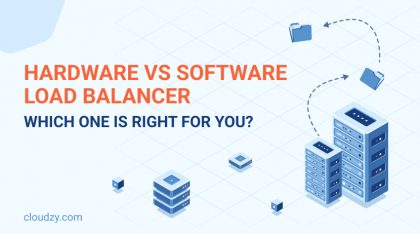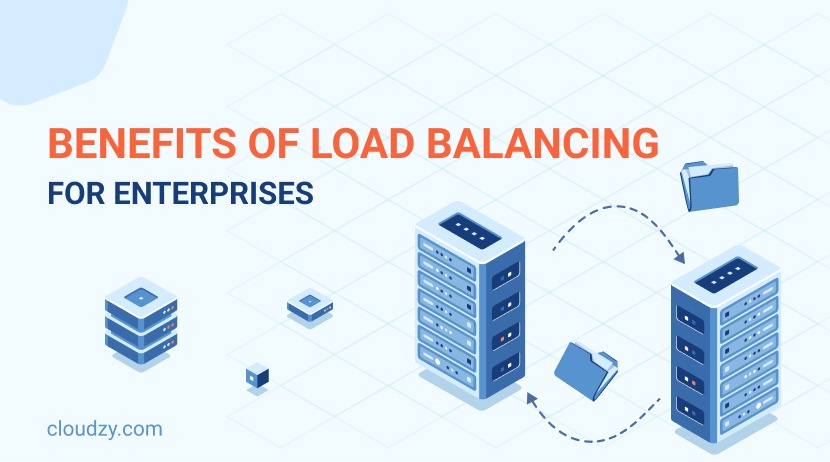If you’ve developed a service or application, or if you’re a business owner in our digital world, you know that delivering uninterrupted service is deadly important. There are several strategies to achieve this goal, but one of the most efficient ones is adopting load balancing technologies. The benefits of load balancing in cloud environments are countless. In this blog post, we’ll try to cover all the essential advantages of load balancing in cloud computing. So, whether you’re a small business or a large corporation, you can join us as we discuss how load balancing can optimize your operations.
Understanding Load Balancing
In cloud computing, load balancing is a method for distributing server workloads across multiple nodes on the server. This approach is great for avoiding server overload and increasing performance. Balancing out the server loads allows you to have smoother operations and a better user experience. For a more in-depth exploration of cloud load balancing, including its mechanisms and how it operates within different environments, we invite you to read our comprehensive blog post on “What is Load Balancing?”.
Benefits of Load Balancing for Websites
As you probably already know, each person who tries to open your website’s content is actually sending a request to the server that’s hosting your website. Now, imagine you only have one single server, and your website starts getting a lot of daily traffic. In this scenario, your host will experience a huge spike in the number of requests it handles. This spike will cause your server to become slower and less responsive.
But what if you have multiple servers in the cloud that manage this workload in a balanced way? This can be a great solution to the performance issue we’re facing in this example. So one of the most important advantages of cloud load balancing for your website is improved performance. But that’s not all. Here’s a list of all the benefits of load balancing for websites:
Scalability
Cloud load balancing allows websites to scale resources up or down based on traffic demands without the need for physical infrastructure changes.
Global Reach
Cloud load balancing can distribute traffic across servers that are located in different locations across the world. This means users are connected to the nearest server, and they experience minimum latency and improved load times.
Cost Efficiency
Cloud load balancing helps websites reduce operational and infrastructure costs by optimizing resource use and allowing for pay-as-you-go pricing models.

Benefits of Load Balancing for Enterprise Applications
Now, let’s talk about the role of load balancing in how well applications operate. This is a list of all the benefits of cloud load balancing for enterprise applications:
Enhanced Application Performance
Cloud load balancing can enhance the response time and performance of applications by distributing user requests among different servers.
Session Persistence
Some applications require user sessions to be maintained with the same server for the duration of the session. Load balancing can be configured for session persistence to make sure the user has a seamless experience.
Application Health Checks
Load balancers perform regular health checks on servers to make sure that traffic is only directed to servers that are functioning correctly. This proactive monitoring approach prevents potential application failures. This way, applications can run smoothly, and users will experience fewer malfunctions.
Centralized Control
Load balancing offers a centralized point of control for managing traffic and policies across enterprise applications. This way, enterprises can simplify administrative tasks.
Benefits of Load Balancing for Data Centers and Networking
Just like in other scenarios we covered, there are lots of benefits of load balancing in data centers and networking. Let’s review them one by one:
Optimized Resource Allocation
Load balancing can guarantee that network and application traffic are evenly distributed across servers in a data center. So, two crucial advantages of load balancing are maximizing the utilization of computing resources and preventing any single server from becoming a bottleneck.
Enhanced Data Center Reliability
As we explained earlier, cloud load balancing reroutes traffic to the healthiest servers. This act improves the overall reliability and uptime of services that are hosted in data centers.
Energy Efficiency
Another advantage of load balancing is reducing energy consumption in data centers. This is achieved by distributing the workload efficiently in a way that server resources use the least power and cooling requirements.
Simplified Traffic Management
You may think that repeating traffic management and emphasizing it whenever we’re talking about the benefits of load balancing is just unnecessary. But the point is this fundamental aspect of load balancing offers so many benefits that are impossible to overlook. A simplified approach to traffic and load management means data centers can implement traffic routing policies more effectively. This way, they can ensure optimal performance and adherence to compliance and service level agreements (SLAs).

Is Load Balancing Worth It?
When discussing the benefits of load balancing, it’s important to look at the whole topic realistically. Like other modern solutions and technologies, there can be some downsides to cloud load balancing. In this section, we’ll take a realistic look at all the pros and cons of load balancing to see if the advantages of load balancing outweigh its troubles.
Load Balancing Pros and Cons:
| Pros | Cons |
| Enhances application availability | Complexity in setup and management |
| Distributes traffic efficiently | Initial cost investment |
| Improves application performance | Requires continuous monitoring |
| Provides scalability | Potential for misconfiguration |
| Increases reliability and uptime | Dependency on a single point of failure if not configured correctly |
Implementing a cloud load-balancing solution can be a lot of work and requires technical expertise to make sure it operates efficiently. Using load balancing in your cloud environment can have other challenges besides the setup process. For example, you need to have a detailed financial plan for all the initial costs. Although all of the initial costs of implementing load balancing usually pay off in the long run, the upfront costs for hardware, software, or cloud-based load-balancing services can be significant. Another challenge in using load balancing is that it’s highly demanding. Maintaining optimal performance in load-balancing systems requires continuous monitoring. This means you need technical staff who are fluent in working with these systems. Another important factor to consider is that incorrect setup and misconfiguration can lead to technical issues and downtime. The last possible threat of load balancing is that if it’s not configured correctly with redundancy, the load balancer itself can become a single point of failure and risk the availability of the entire service.
Want a high-performance Cloud VPS? Get yours today and only pay for what you use with Cloudzy!
Get Started HereConclusion
This blog reviewed all the important advantages of load balancing in cloud computing along with providing a pros and cons table. By evaluating the cost-benefit ratio of load balancing and carefully studying the needs of your enterprise, you can hopefully make an optimal decision on whether or not you want to implement load balancing in your cloud environment.
Speaking of cloud, if you’re about to start using cloud environments, consider checking out Cloudzy’s solutions. We offer Cloud VPS solutions that are built on top of high-quality infrastructure and resources. Our services also include a 99.98% uptime guarantee, 24/7 technical support, and a pre-installed OS of your choice. So, don’t hesitate to check out Cloudzy’s Cloud VPS solutions and upgrade your VPS experience.
FAQ
Does load balancing improve performance?
Yes, load balancing can significantly improve performance. It does so by distributing incoming network traffic across multiple servers. This makes sure no single server becomes overwhelmed, reduces response times, and enhances the speed of content delivery to users.
What is the importance of balancing loads?
Balancing loads is crucial for maintaining high availability and reliability of applications. It can prevent server overload and facilitate scalability by distributing traffic and workloads across servers.
Why is network load balancing important?
Network load balancing is important because it optimizes resource use, maximizes throughput, minimizes response time, and ensures a reliable, fault-tolerant service across multiple servers.




